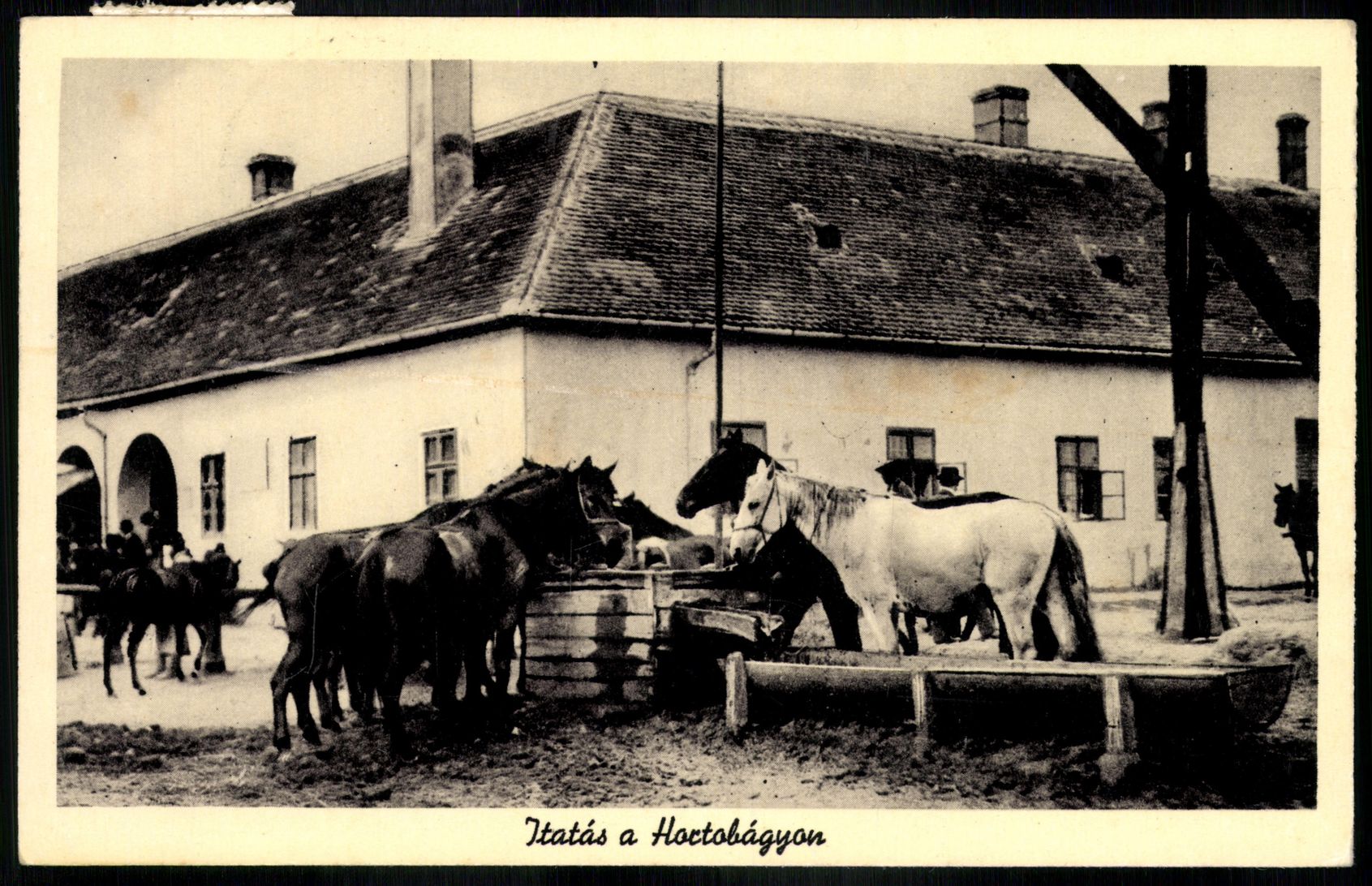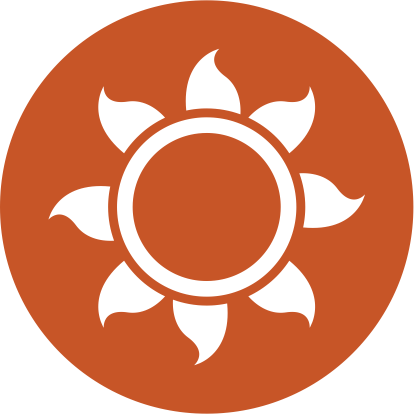The utilization history of the Hortobágy
In the desolated lands of the Hortobágy the puszta-tenements were the first to emerge where the large herds of merchants and merchant-princes of Debrecen grazed in the 16th century. It is cited in text-books as well, that Gáspár Bíró, a merchant-prince from Debrecen, had herds of 10,000 cattle; and that the Duskás and Fekesházi families kept their herds in the expansive pastures of Csege. The numerous cattle of the masters were shepherded and driven to the fairs of Southern and Western Europe by herdsmen (hajdús) and by lads with huge sticks.
The Puszta was the external grazing-land of Debrecen and of the neighbouring settlements where the resting, unmilked, unyoked breeders were kept from the springtime driving-out to the autumn housing. Grazing was regulated neither by Debrecen, nor by the neighbouring settlements up until the middle of the 18th century. However, the increasing number of animals made it necessary to determine the right and order of grazing, and grazing organizations were formed. The pasture was first divided to districts. For example, on the puszta owned by the city of Debrecen, 11 districts of herds, 2 of oxen, 2 of studs, and 18 districts of sheep were appointed in 1774. Since the beginning of the 19th century, the grazing-rights have been regulated several times by the city of Debrecen. In 1878, it was ruled that any residents of Debrecen who did not own a house, but paid the taxes regularly, could take 5 neats or the corresponding 25 sheep out to the commonable pasture. Those with house and land could graze 8 neats or 40 sheep per 9,000 square-fathoms. Finally, the maximum number of the grazing stock was determined in a way that the landowners, irrespective of the size of their tenement, could not keep more than 184 neats or 820 sheep on the commonable pasture of the puszta, unless they paid fűbér (grass-pension) for the extra cattle. This regulation was in force until the expropriation of the Puszta in 1948.
In the middle of the 19th century, the city of Debrecen divided the pasture of the puszta to farms. The fact that the two waters, the Hortobágy and the Árkus, divides the puszta into three main parts, was considered as a starting-point. So, 7 farms were formed on this side of the Hortobágy, on the area beyond, and also on the lands beyond the Árkus (the one behind Máta, and those of Papegyháza, Hármashalom, Pentezug, Faluvéghalom, Halasköz and Sárosér). At the same time, the cattle-districts of the owner-community of Debrecen were situated on Macskatelek, Feketerét, Tornyidomb, Szásztelek, Szatmáritelek, Kungyörgy, Ludashalma and Derzsitelek. The farms and districts as economical units ceased to exist with the coming of nationalization, or state farms were formed in their places.
The Hortobágy Management Body was set up in 1879 to help to promote rational farming on the Hortobágy. The Management Body was made up of landowners and it had an opinant, proposing role as opposed to the municipal council.
Máta became the centre of the puszta-farms. The office-bearers, the veterinarians, the commissioner of Máta and the gendarmes lived there. The commissioner of Máta was the most respectable man in the eyes of the shepherds, although the municipal councillor had a higher position.
In the classic home of herding extreme weathers were impermanent. Apart from the rare droughty years, the grazing cattle have always had more than enough to eat. However, after the regulation of the Tisza, the fruitful floods that had been watering the sod failed to occur any more and the quality of the pastures started to decay. The owners from Debrecen complained: "Since the regulation of the Tisza, our saliferous grazing-field, not fertilized by the floods at springtime, is getting less and less usable and even in case of favourable weather our farmer public can only keep its cattle out there until July at best, and the once fat grazing-fields become totally barren by July and the cattle do not find enough food there."
The most important concern of the utilization of the Hortobágy is the supplementation of water. Projects of watering and channelling were created. The idea of establishing fish-ponds emerged as a method of amelioration. But the town having debts because of the fin-de sičcle large-scale public projects could not provide money to solve the problem of the utilization of the puszta. The fate of the Hortobágy remained a public concern though. The owners considered those plan to be acceptable that served the purpose of stock-raising. Thence the plan of more intensive shepherding accompanied by breed shifting was dismissed, saying that only the Hungarian Grey Cattle is fit for the cheap, grazing stock-raising.
The plan of flooding the Hortobágy and consequently the plan of establishing fish-ponds did not disturb the traditions of shepherding in the Hortobágy. The spot where the fish-pond was designed to be put was on the least fertile land called Csúnya-föld (Bad lands). The enterprise of the fish-pond was taken by the Haltenyésztő Rt. (Fish-farming Inc.) in return for 10 years profit. The constructions started in 1915 but it was not finished until 1921. The then largest system of fish-ponds of Europe received the invigorating water from the Tisza through a 24 kilometres long artificial canal. However, since 1948 it has been connected to the water-supply of the Western Trunk-main built from Tiszalök together with the other fish-ponds (of Ohat, Derzs, Csécs, etc.). The establishment of fish-ponds was accompanied with the development of a particular branch, that of those specialized in fish-farming. The pond-farms employ 4-500 people a year from the neighbouring settlements. Fish-ponds grow reed in great quantities. The reed-fabric, an important product of the building-trade, has led to the establishment of reed processing plants, where the number of reeders reached hundreds. In a time the typha was selling well. People of Tápé, Bősárkány, Biharnagybajom and Tiszavalk who were doing matting and meshing typha for a living got the raw material from here.
Afforestation in the Hortobágy was also planned from the 1880s. Forests of 3-5 acres were planted only to protect the cattle. Planting was more successful by the roads and rivers.
Rice-growing was also attempted. The experimental growing was started on 4 cadastral acres, on the lands of Máta in 1936.
For the purpose of establishing experimental farms 3789 cad. Acres of land on the Belső-Ohat (Inner Ohat), near to the commonable pasture, and 550 cad. Acres of land on the Külső-Ohat (External Ohat) were arrented to the state in the crop years 1943-44.
By the nationalization of 1948, a new era has begun for the utilization of the Puszta. Debrecen was totally excluded from its age-long heritage. The pusztas of Darassa and Papegyháza were annexed to Balmazújváros, on the area of Külső-Ohat Telekháza was established as a part-settlement of Egyek. On most of the empire of the "cívises" of Debrecen, the National Trust of Animal Husbandry of Hortobágy has started the organization of state farms. The Centre of State Farms of Hortobágy was formed in 1950. The State Farm dealt with grazing animal husbandry for a while, but it was also engaged in enlarging fish-ponds, the size of which reached 5576 ha. by 1983. The size of plough-lands was increasing too (eg.: as an experiment, rice was grown on 6,000 ha.). Attempts were made in planting new forests. Among the branches of traditional animal husbandry, shepherding, with its centre built in Darassa, was almost the only one that survived. It was the initiator of establishing the village of Hortobágy, where the workers of the Farm who had been living in different places could find better living-conditions. It has an important role in building the irrigation system of the Eastern and Western Trunk-mains. The duck- and goose-farms appeared on the Hortobágy in the time of the State Farm. However, the stocks with ten thousands of animals endanger the ecological balance of the area. Fundamentally the State Farm has proven to be an unsuccessful experiment. It meant the downfall of the idea of the giant-farm since it never succeeded in embracing the whole area.
The political change resulted in the privatization of a significant part of the state property. Then the fate of the State Farm of Hortobágy was questioned. First the Fish-farm of Hortobágy became independent in 1989 and it was turned into an incorporated company in 1992. The State Farm was liquidated in 1995 and the Public Utility Company for Nature-conservation and Gene-preservation was formed on its territory of 22,000 ha. The PUC is a managing body with a nature-conserving approach, as the name indicates. The PUC keeps herds of Hungarian Grey Cattle and buffaloes, flocks of Racka sheep and herds of Mangalica-pigs with the purpose of gene-preservation. The progeny is sold in home and foreign markets as bio-products. It is very important to have a co-ordinance between the market-oriented PUC and the state-financedHortobágy National Park in the protection of nature.
The Hortobágy National Park commenced in the territory of the State Farm in January 1, 1973, on an area of 52,000 ha. With the continuous enlargements, this area now reaches 80,000 ha. that serves to preserve our unique natural and ethnographic values. The whole territory of the Park is a biosphere reserve that, according to the Ramsar Convention, is an internationally registered wetland habitat of 20,000 ha. In 1999 the UNESCO granted the title "Part of the World's Heritage" to the area. The HNP, while working on the restoration and conservation of the natural landscape, protects the monuments of folk architecture on the puszta, and by the almost symbolic leasing of the pastures it supports the practice of traditional grazing animal husbandry and the re-naturalization of ancient breeds. It takes the responsible task of improving the image of the geographically organic Hortobágy from the aspect of the traditional animal husbandry.
The Lovasfalu (Equestrian Village) is an interesting world in the Hortobágy. The EPONA Ltd., bearing the name of the god of horsemen, built the village unique in Europe on the 34 ha. area near to Máta that was bought from the State Farm in 1992. The village is partly built on the river Hortobágy with 21 independent buildings (originally 84 was planned). The houses are self-contained with their own stables. Their studs mean the top of breeding sport-horses. The native horse of Hortobágy, the Nóniusz, is also bred here. The qualified horsemen perform successful horse-shows abroad and in Hungary as well. The Hungarian public accepted the project built on home and foreign capital costs, with mingled feelings: it is considered necessary, but irrelevant in this area.
















